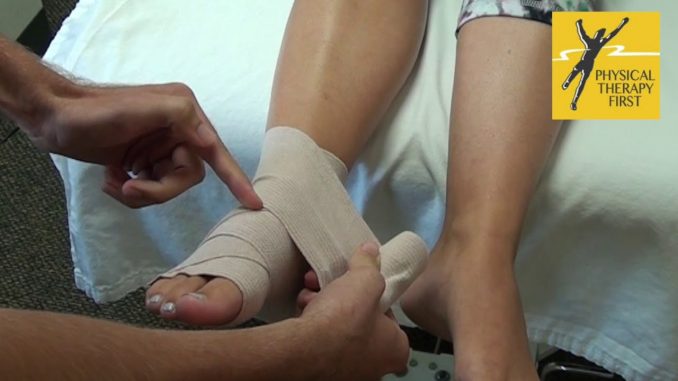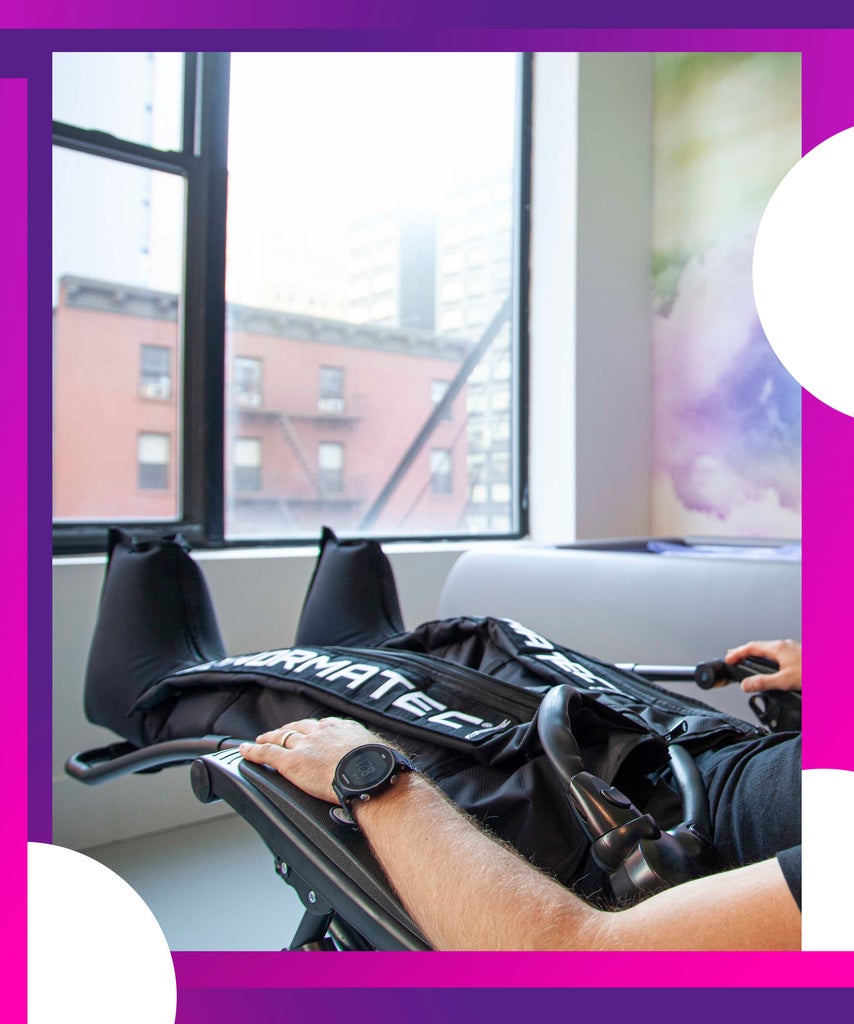

I’m not an athlete. Sure, I participated in sports in high school, and played a year of a varsity athletics in college. But that’s where my fitness career ended. So when I first heard about compression therapy, I figured, Not for me.
The main goal is to increase blood flow in the body. That helps deliver oxygen and nutrients to key areas, something that’s been know to benefit athletes specifically. But then I heard that compression therapy is also advantageous for those who have desk jobs (aka, me). After all, what slows down blood flow more than being stuck in a chair all day?
There are a few different methods of compression therapy. The kind I was interested in the type you may have seen on Instagram. You step into what look like space suit pants, zip them from toe to crotch, and relax on a recliner while they work their magic.
These so-called compression boots work by squeezing and releasing around your legs. The pulsing boosts blood flow and transports fluid out of the limbs. “The main function of the compression boots are to engage a lymphatic flush,” says Chris Contini, a recovery specialist at Denver Sports Recovery in Colorado, told University Chiropractic and Wellness. “[It helps] facilitate the removal of waste product, inflammation, swelling and promotes a healthy blood flow back into the environment.”
This hastens recovery from intense activity (like running or squatting), and reduces damage caused by inactivity (sitting) too.
I was able to try out compression boots from a company called NormaTec, at FICS in New York City. And I wasn’t expecting all that much — but honestly, it felt amazing.
A post shared by FICS (@ficsnyc) on Sep 15, 2019 at 10:00am PDT
The closest sensation I can compare it to was getting a deep massage on both of my legs at the same time. After the treatment, my legs felt a little lighter and more energized; the walk to my train was actually enjoyable.
FICS charges $25 for a 30 minutes; and if you really love the treatment, you can cop your own pair for around $1,695.
If sitting around for a half-hour with your legs encased in what look like moon-walking boots isn’t your idea of a good time, there are other ways to get the perks. One 2016 study found that a traditional post-workout massage delivers the same benefits as post-workout compression therapy. Lymphatic drainage massages may be helpful too, since they’re designed to increase blood flow and transport fluid out of the limbs.
Using compression bandages has also been found to have similar anti-inflammatory effects to a lymphatic drainage massage, specifically on areas like legs and ankles. They can reduce swelling and help increase blood flow — this method is often used by athletes and their trainers for wound care. Anyone can use compression bandages, but if you don’t have an athletic trainer available to you you may find them a little tricky to put on yourself; watching YouTube video can help you figure out the correct technique.
The easiest and lowest-cost alternative is compression clothing, like socks or sleeves. You’ll see people wearing them on long-haul flights (to reduce the risk of developing blood clots) and after or sometimes during exercise. They could be worth a try; many people say they feel better after wearing them. But no large, peer-reviewed studies have confirmed they offer any benefit.
I plan on slipping back into a pair of compression boots when my legs start to feel sore or fatigued. The treatment feels great, is reasonably priced, and is quick. And to make the aftereffects last longer, I can try standing up for a few minutes once an hour at work. That’s all it takes to increase blood flow to the legs and minimize some of the dangers of sitting down for extended periods of time. Try it — your legs will thank you.
Click HERE to read more.
You can publish this article on your website as long as you provide a link back to this page.

Be the first to comment